Understanding Diamond Grading
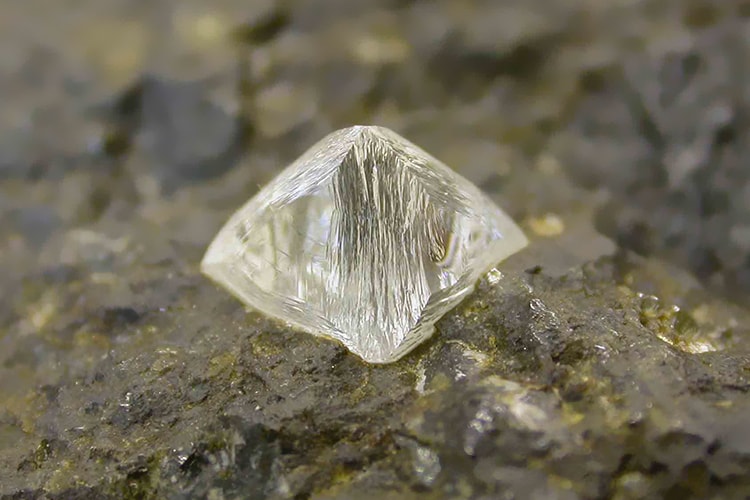
What does diamond grading actually mean, and why is it important? If you are new to the world of gemmology and want to get to grips with the study of diamonds and precious gems, this is a helpful place to start. Heer, Gem-A Tutor Pat Daly shares beginner’s level insights into grading and assessing a diamond for its characteristics, known as the 4Cs.
The relative values of diamonds have been important since they were first traded. Larger stones were more appealing than smaller ones, for example, but size has never been the only consideration.
Diamonds are attractive because they can be of any color, and their optical properties mean that well-cut stones return more of the light which falls on them to an observer than any other gemstone; this feature is called brilliance. In addition, some of the white light is split into spectral colors, and diamond is one of the best gemstones to display this property, known as fire.
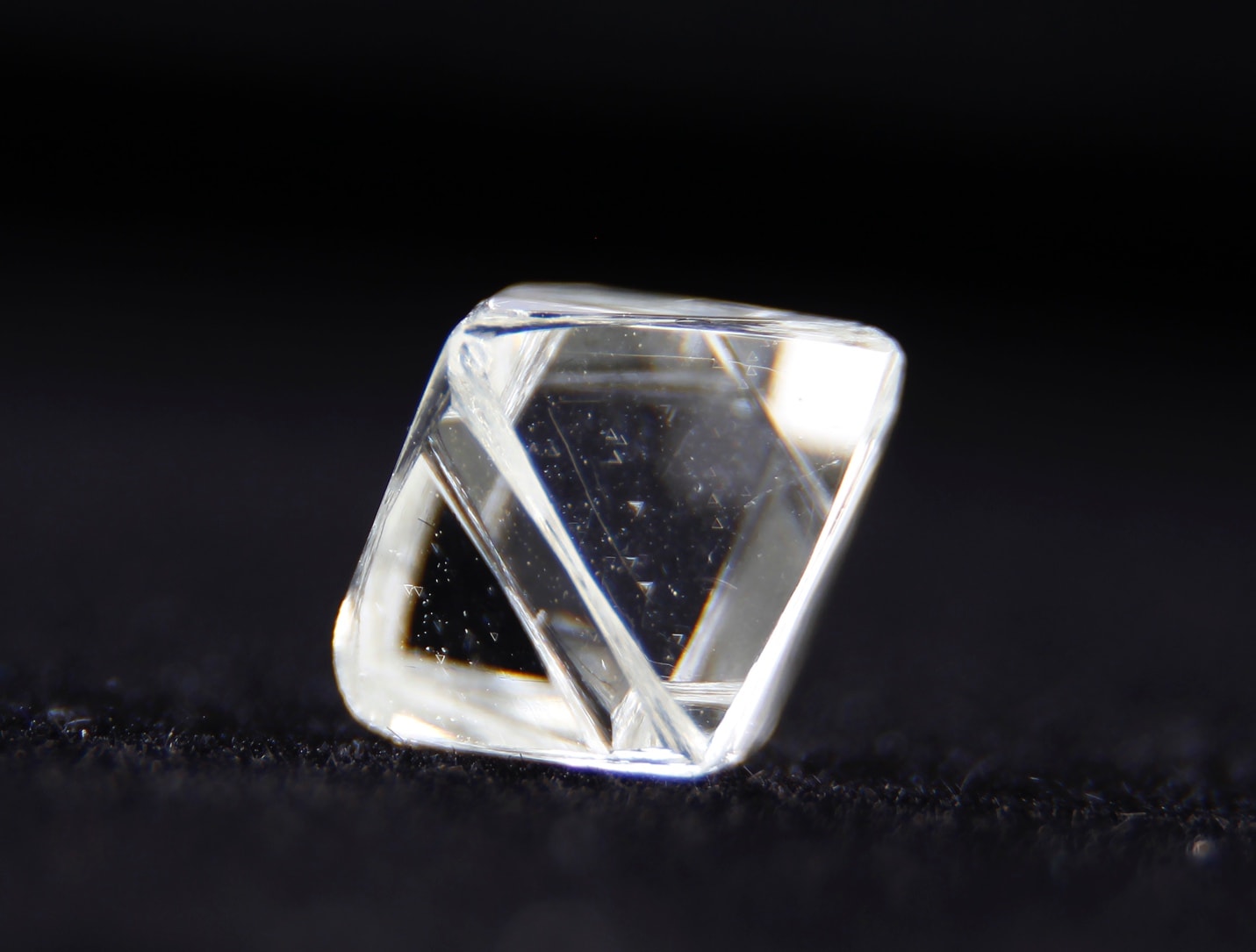
A rough diamond crystal photographed by Henry Mesa.
Over time, the factors that make one diamond preferable to another have been refined so that they may be considered under four headings, known as the 4Cs. They are Carat weight, Color, Clarity and Cut. The value of a diamond depends on the combination of these factors.
Diamond Carat Weight
The size of a diamond measured in carats, the standard unit of weight for gemstones, is important because, other factors being equal, larger stones are more valuable than smaller ones, not least because they are rarer. It has been calculated that the average size of a rough diamond from a mine is less than 0.10 carat, and this weight may be reduced by 50 to 60% by polishing. A faceted diamond weighing more than one carat is a rare stone.

Rough diamond crystal photographed by Pat Daly from the Gem-A Archives.
Diamond Color
A diamond may be any color, but most stones vary between white and yellow or brown. This range is divided into 23 categories by GIA denoted (D to Z), of which the most favored are those with the closest approach to pure white (D color). Under controlled conditions, a stone is graded for color by looking obliquely through the pavilion while it rests on a white surface. The process requires careful assessment of the stone by a practiced observer.
At the lower end of the scale, the color becomes more evident, and graduates to definite, desirable colors called fancy colors. For the commonest colors, yellow and brown, there is some overlap between the D-Z range and the descriptions used for fancy stones. This happens because fancy-colored stones are assessed by looking through the crown of the stone rather than the pavilion. This means that a diamond cutter may polish a stone in a way which accentuates the color, shifting it, for example, from the white to yellowish range to fancy yellow.

A round brilliant-cut diamond from the Gem-A Archives.
For rarer colors, such as pink, green and blue, any color seen through the crown of the stone places it in the fancy color range. The grading of fancy-colored diamonds is a specialized task which cannot be safely undertaken by anyone who has not been trained to do it.
Diamond Clarity
Clarity refers to the abundance of inclusions in diamonds. A diamond will look more attractive if there are no inclusions to distract the eye or disturb the passage of light through the stone. A grading system has been developed based on the number, size, color, and position in the stone and any effects they may have on its optical properties. The most desirable stones have no internal features which an expert can see at ten times magnification in properly controlled conditions.
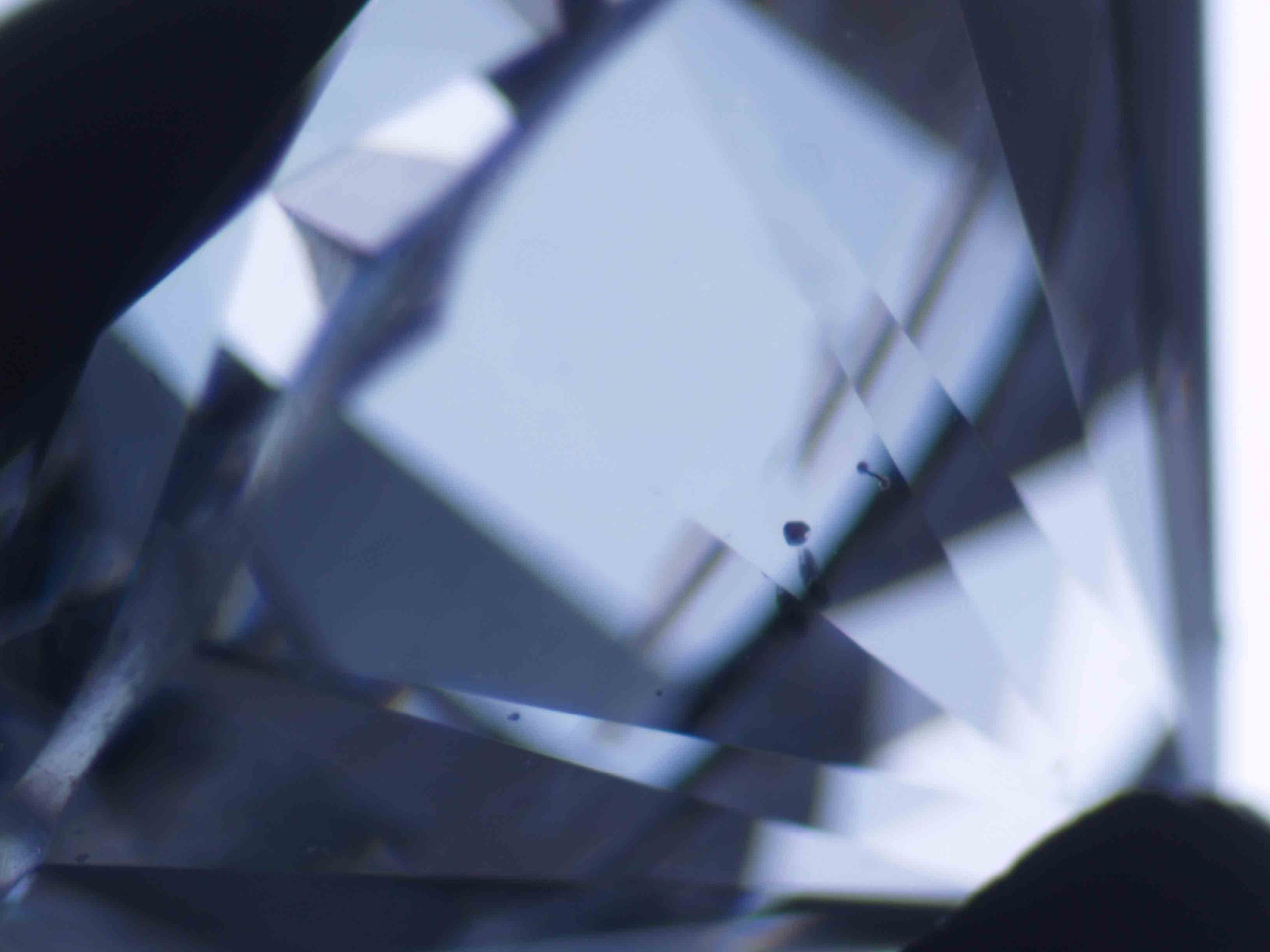
Mineral inclusions in a faceted diamond from the Gem-A Archives.
The position of inclusions is significant. A crack or a crystal, for example, located near the girdle of a stone, is not considered to be so objectionable as a feature of the same size and color in the middle of the table facet.
Diamond Cut
The fourth C – cut – is equally important. Most diamonds do not have a definite, desirable color. Instead, they are valued for their brilliance, sparkle and fire. Brilliance is the return of light which falls on a stone. Sparkle denotes the movement of reflections from facet to facet as the stone is turned. Fire is the splitting of some of the white light in the stone into spectral colors. These effects can be optimized by careful design so that the facets of a cut stone have the best relative sizes, shapes, positions and angles.
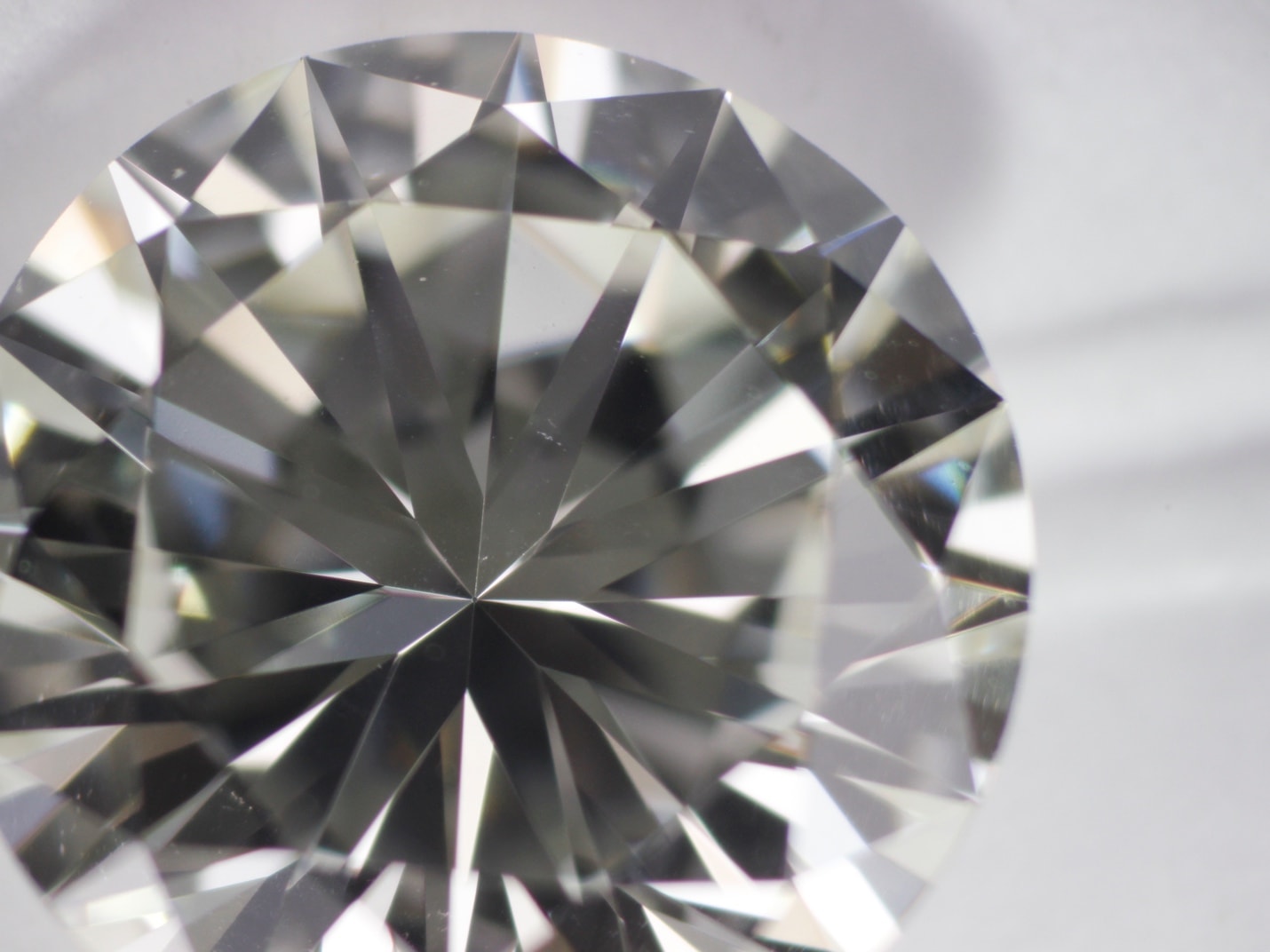
A closer look at diamond facets photographed by Henry Mesa.
The quality of polish of the facets is important because they act as windows and mirrors on the stone, allowing light to enter and leave it as efficiently as possible. Poor polish will scatter some of the light and detract from the overall appearance of a stone. All these factors are judged when deciding the cut grade of a diamond. Informal terms such as light performance have been used to indicate how a stone affects light, but they are not used in diamond grading because they are imprecise.
Finding the Compromises Between the 4Cs
When preparing diamonds for the jewelry trade, compromises must be made between the 4Cs, so that the best value is obtained from each diamond. Size may be reduced to cut out a large inclusion. As a result, the value of the finished stone is increased even though it is not as large as it could be. The faceting style is affected by the shape of a rough diamond.
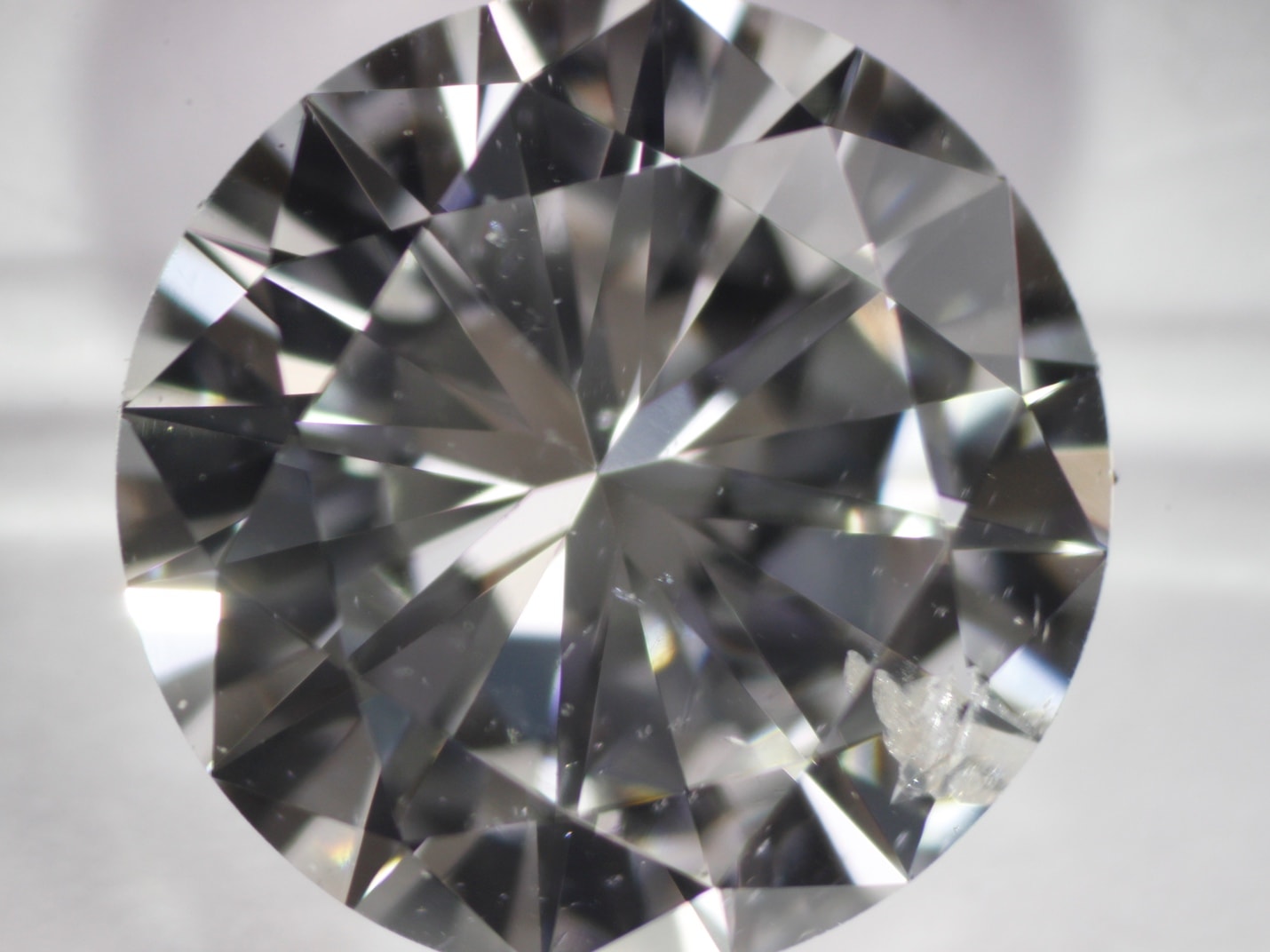
A diamond under the microscope photographed by Henry Mesa.
The round brilliant cut is generally reckoned to be the best style for a diamond, but the outline shape of a crystal is square, at best, so much material is lost during fashioning. A stone of less regular shape may be cut to an oblong or pear shape to minimize weight loss in cutting. This reduction increases the value of the finished stone even though the shape is not ideal.
Many examples could be given where one factor is promoted at the expense of another, by diamond polishers and by retail customers who might be prepared, to some extent, to sacrifice clarity or cut quality to obtain a larger stone.
What is Diamond Grading?
Diamond grading involves the skilled appraisal and careful consideration of all aspects of the 4Cs. Experienced professional graders, using well-designed and costly equipment in ideal lighting conditions, with access to databases and the benefit of the opinions of fellow professionals, may work without distraction to arrive at their opinions. As a result, certificates issued by their laboratories are widely used as independent opinions that traders and their customers can trust.
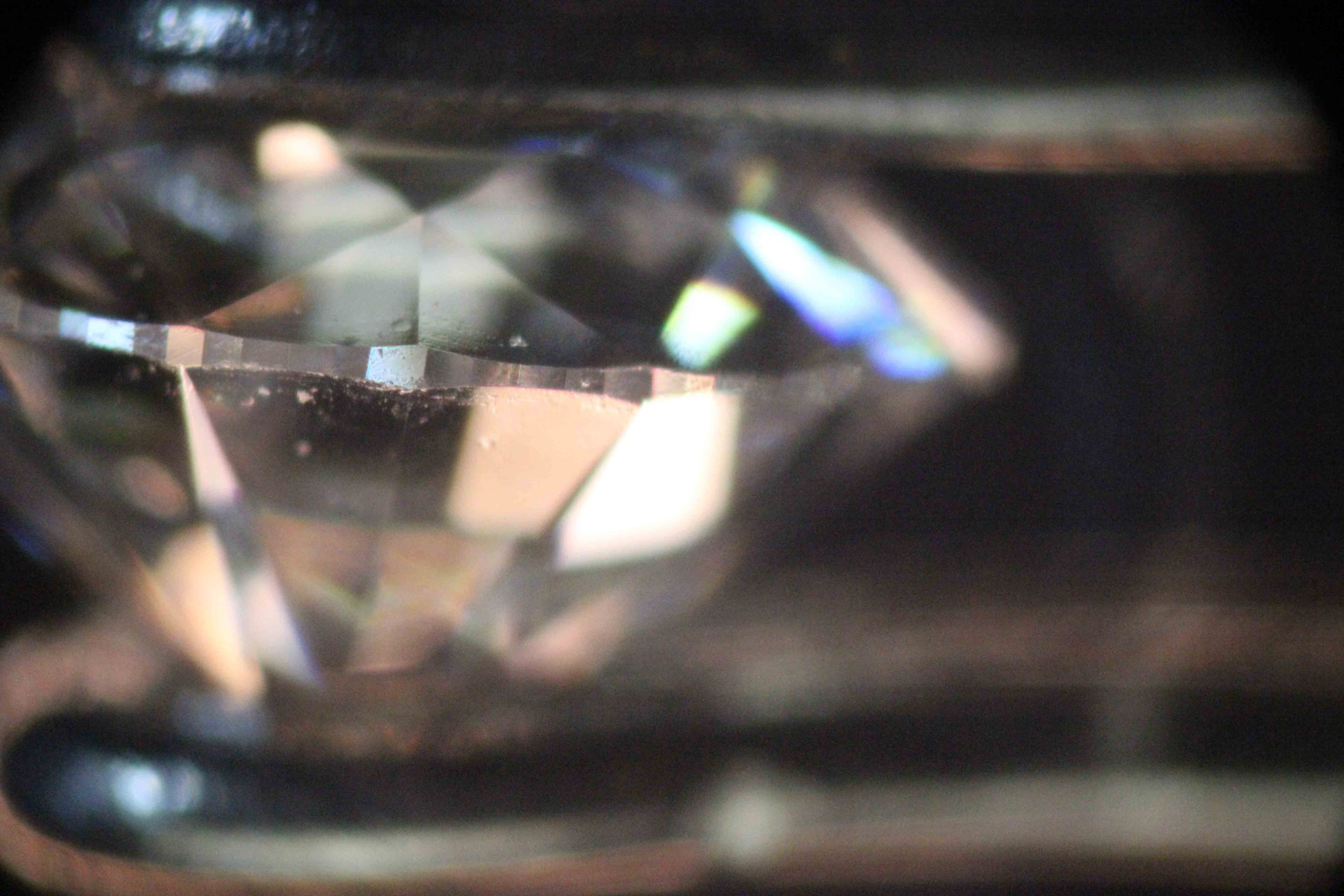
The girdle of a faceted diamond from the Gem-A Archives.
Independent traders who do not have these advantages may still need to make an independent assessment of the quality of a diamond when buying and selling or when verifying that a stone corresponds to the description given in a certificate to guard against substitution. This may be done by attending courses designed to equip them with the necessary skills and accepting that they will not be able to compete with professional graders without further experience.
Source: Gem-A, The Gemmological Association of Great Britain